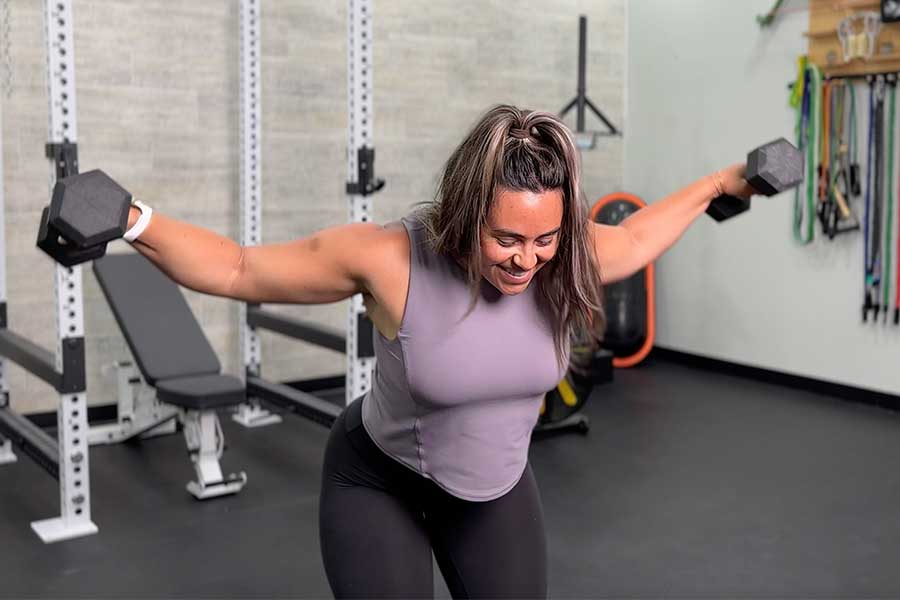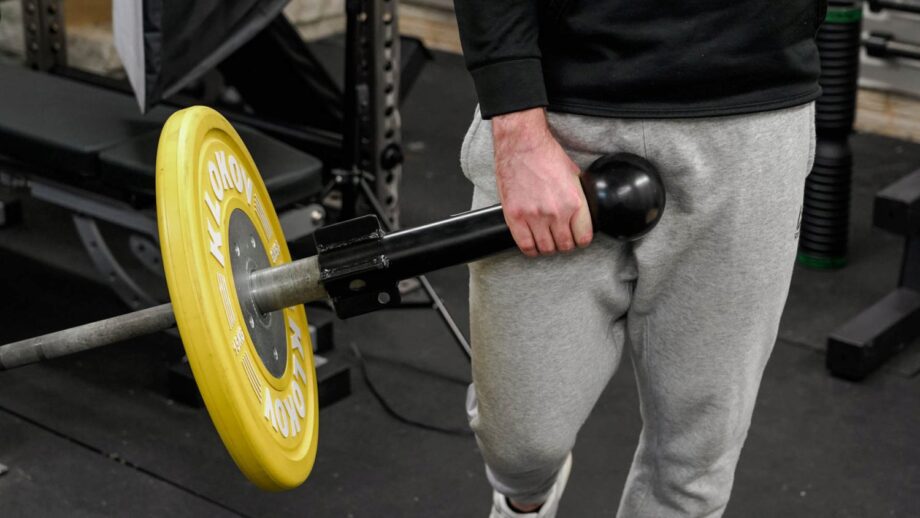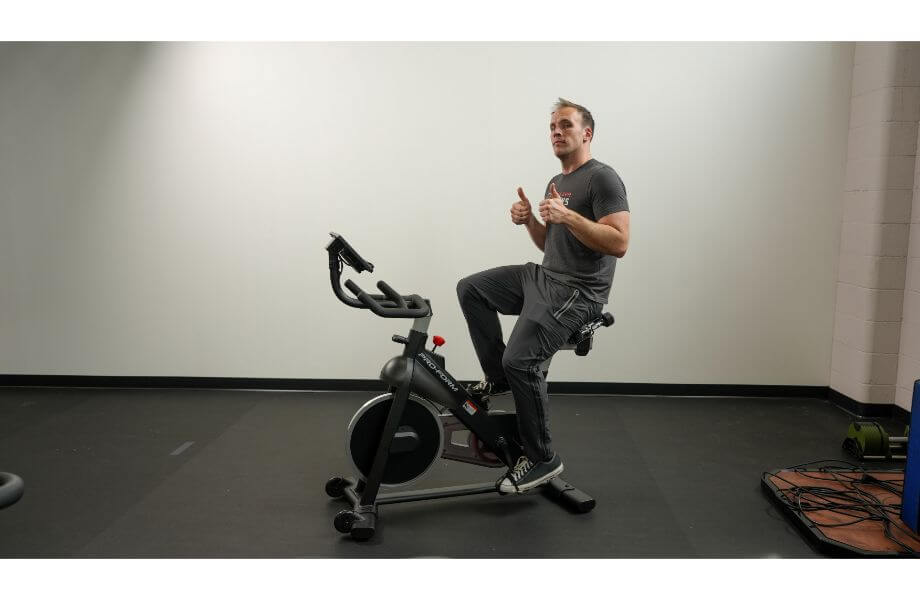The dumbbell reverse fly exercise is as close to an isolation exercise as there is for the upper back and posterior delts. When you take the biceps out of this back exercise, you’ll focus on the upper back for improved muscle development. The reverse fly exercise will directly impact your posture and carry over to other complex movements such as the bench press, squat, and deadlift.
RELATED: Best Back Exercises
To get the most out of this strength training movement, we’ll dive into how to do it right, the benefits of the reverse fly, muscle groups trained, and a couple of variations to incorporate into your workout routine.
Want to put more oomph in your flex? Then let’s get to flying.
How To Do the Reverse Dumbbell Fly
This personal trainer will tell you how to do the standard reverse dumbbell fly with good form.
- Grip a pair of dumbbells with your preferred grip in front of your thighs, keeping your shoulders down and chest up.
- Then, with your feet shoulder-width apart, hinge at the hips until the dumbbells are hanging below your knees.
- Raise both arms out to the sides until your hands are at shoulder height, keeping a soft bend in your elbows.
- Squeeze your shoulder blades together at the top of the movement.
- Lower the weight back to the starting position and reset and repeat for your desired reps.
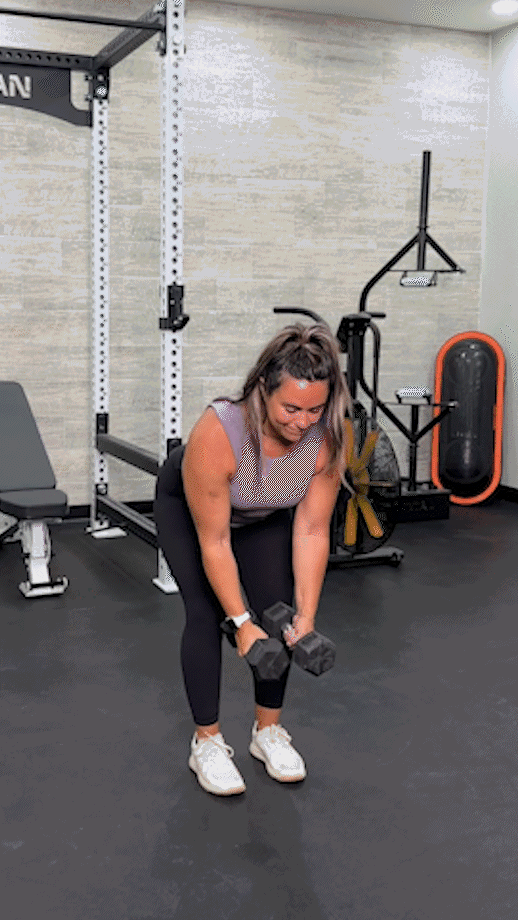
Form Tips
The dumbbell reverse fly exercise is relatively easy, but you must pay attention to a few things to get the most out of this exercise.
- Because you’re not using your biceps, use less weight than you usually use for your unilateral dumbbell rows.
- Ensure you keep your shoulders down and chest up the entire exercise to maintain a neutral spine.
- Keeping a soft bend in your elbows will take unnecessary stress off this joint.
- When getting in the bent-over hinge position, ensure you feel the tension in your glutes and hamstrings, not your lower back.
- Start the fly by pulling your shoulder blades together, and avoid using too much momentum with the upper body.
Reverse Fly Benefits
The reverse fly will help strengthen your upper back and posterior chain, and help your shoulders look and perform better. And here are two more essential benefits to incorporating the reverse fly into your workout routine.
Better Squat, Deadlift, and Bench
Strengthening the upper back is vital in improving your squat, deadlift, and bench. When doing the barbell back squat, the upper back and rear deltoids provide a place for the barbell to sit, and keeping it tight prevents you from leaning too far forward in the squat and turning the squat into a good morning.
RELATED: Learn Proper Squat Form from an Olympian
While bench pressing, upper path strength and tightness support and control a better barbell path, allowing for good technique, less wasted energy, and pushing more weight. Upper back strength plays a huge role in keeping a neutral spine during the barbell deadlift. Upper back tightness keeps the barbell close when you pull; for better technique, a neutral spine is essential for lower back health.
Improved Posture
The upper back and rear delts muscles are essential for keeping your shoulders down and back to maintain good standing and lifting posture. The upper back muscle weakens over time as we live in a sit-happy world where we’re constantly hunched. This may lead to rounded shoulders, forward head posture, and a higher incidence of back pain1.
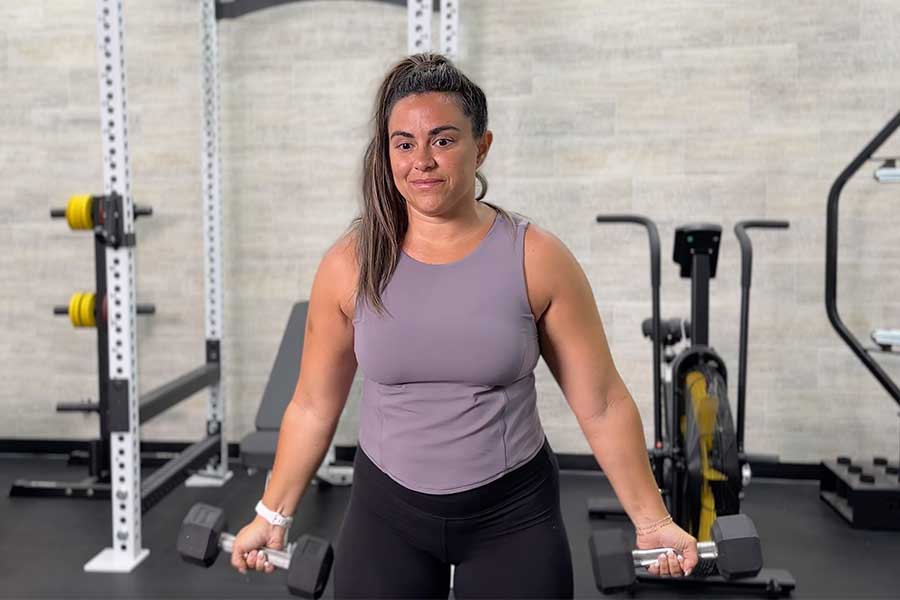
Better Shoulder Mobility
Being hunched over for long periods will weaken the upper back and impede shoulder mobility.
When shoulder mobility is limited, it will lead to poor form and, as a result, pain and injury. By strengthening the upper back muscles and rear delts with the dumbbell reverse fly, you’re enabling better posture and, therefore, better shoulder mobility2.
RELATED: Best Shoulder Exercises
Muscles Worked by the Reverse Fly
Here are the primary muscles trained by the reverse fly exercise.
Posterior Deltoid
The reverse fly (rear delt fly) focuses on the posterior muscle of the delts, which assists the upper back muscles in moving your arms behind your body (horizontal abduction) and assists the scapula with shoulder adduction (the shoulder blades coming together).
Lower Back
The three muscles of the lower back (erector spinae) contract isometrically to keep your spine in neutral while in the hinge position. This fact allows the bigger muscles of the rhomboids and trapezius to do their job.
Rhomboids
The rhomboids run from the inner edge of your scapula to your spine and are one of the two main upper back muscles which bring the shoulder blades (scapula) together during the reverse fly.
Traps
The trapezius is a sizable fan-like muscle with upper, middle, and lower muscle fibers. Regarding the upper back, we are talking about the middle traps, which, along with the rhomboids, bring the shoulder blades together when performing the reverse fly.
3 Reverse Fly Exercise Variations
Like most good exercises, the reverse fly is performed in a variety of ways and with different equipment to allow for a range of abilities, as well as prevent overuse injuries and training boredom. Here are three such variations of the reverse fly.
Seated Reverse Fly
Whenever you increase the stability of an exercise, like sitting down, you decrease the use of your stabilizer muscles and drive more muscle activation to the working muscles. The seated reverse fly does this and may allow you to use more weight than the bent-over variation.
How to do it:
- Hold a pair of dumbbells, one in each hand, and sit on a flat bench.
- Lean your torso forward toward your thighs while keeping your shoulders down and chest up.
- With your palms facing each other and your wrists neutral, raise both arms laterally to shoulder height, keeping a soft bend in your elbows.
- Squeeze your shoulder blades together at lockout.
- Slowly lower the weight back to the starting position and reset and repeat for the desired repetitions.
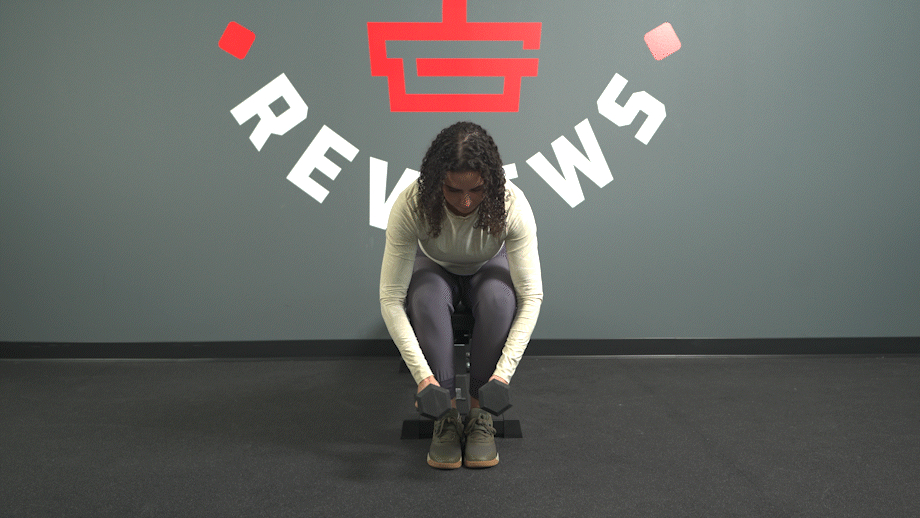
Reverse Fly with Resistance Bands
The beauty of the reverse fly with resistance bands is the ascending resistance, making it more challenging as the band stretches. This variable resistance helps improve your strength between your shoulder blades without using dumbbells.
How to do it:
- Place a looped resistance band underneath both feet and hold each end of the band.
- Perform a hip hinge, feeling the tension in your hamstrings.
- Keeping your shoulders down and chest up, pull the band up and out to the sides until your shoulder blades come together and your hands are at shoulder level.
- Lower back to the starting position and reset and repeat.
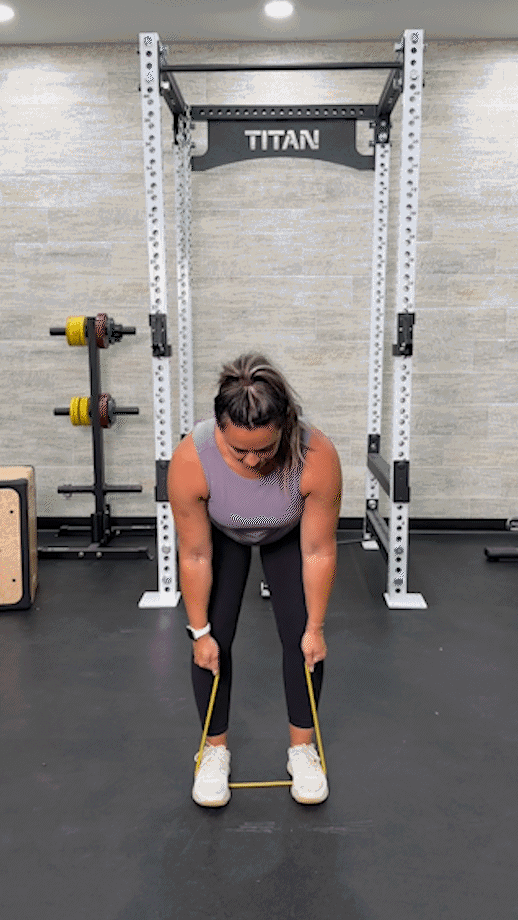
Bent-Over Cable Crossover Fly
The bent-over cable reverse fly is the most demanding reverse fly variation around. The constant tension of the cable machine focuses even more on those upper back and posterior delts throughout the entire range of motion.
RELATED: Best Cable Machine for Home Gyms
How to do it:
- Start on the lowest cable setting and use your preferred choice of attachment (or you can grip the cable for more of a challenge).
- Grip the left cable in your right hand and the right cable in your left hand and stand in the middle of the cable machine.
- Perform a hip hinge, keeping your shoulders down and chest up.
- Pull each cable laterally until your shoulder blades come together.
- Then return to the starting position and reset and repeat.
3 Common Mistakes
The reverse fly is not a complex exercise, and if you’re comfortable hip hinging, it is an excellent isolation exercise to strengthen the upper back. But only if you don’t make these three common mistakes.
Rounding the Spine
Rounding the upper and lower back puts your working muscles at a disadvantage and increases the risk of injury. Keeping your shoulders down and chest up will help, but if it doesn’t, perform the seated reverse fly and work on your hip hinge.
Using Momentum
Using momentum is OK in some circumstances, but when it comes to isolation exercises like the reverse fly, you’ll lose muscle-building tension where you need it most—the upper back. Instead, use a weight where you feel the muscles working and momentum is avoided.
Too Much Weight
It is great to push yourself but not at the expense of shortening your range of motion. The inability to perform an entire ROM with the reverse fly means you’re trying to lift too heavy, and the muscle-building benefits go bye-bye.
Reverse Fly Exercise: Final Thoughts
The dumbbell reverse fly and its variations are an excellent exercise to isolate the upper back to improve its size and strength. Vanity is a great reason to start doing the reverse fly, but it has a few significant benefits, too:
- Improving posture
- An outstanding accessory exercise for the Big 3
- Improved shoulder mobility and reduced injury risk to the shoulder region
When you perform the reverse fly with proper form and don’t make any of the common mistakes mentioned above, you too can reap the benefits of the reverse fly.
Reverse Fly Exercise: Q&A
Are reverse flies a good back exercise?
Reverse flyes, no matter the variation you perform, are an excellent exercise to include in your back workouts because they target the muscles between your shoulder blades, aka, the upper back. When executed from the hinge position, reverse flyes strengthen the lower back isometrically, too.
How to do a reverse fly?
There are many ways to do the reverse fly because of the number of variations, but there are a couple of constants. You keep your shoulders down, chest up, and a slight bend in your elbows, and you bring your shoulder blades together using muscles and not momentum.
What is the difference between a bent-over fly and a reverse fly?
Two main differences exist between the bent-over fly and the reverse fly. The reverse fly focuses on the posterior deltoids, and the bent-over fly trains the posterior delts and upper back. Second is the body position; as the bent-over name suggests, it is performed in a hip hinge position, while the reverse fly is mainly performed from a standing position.
Do reverse flys work lower back?
Yes, the reverse fly trains the lower back, but only when performed in the hip hinge position. Here the lower back works hard to keep your spine neutral, and this helps to improve your lower back muscle endurance.
References
- Atalay E, Akova B, Gür H, Sekir U. Effect of upper-extremity strengthening exercises on the lumbar strength, disability and pain of patients with chronic low back pain: a randomized controlled study. J Sports Sci Med. 2017;16(4):595-603. PMID:29238262
- Lee DE, Seo SM, Woo HS, Won SY. Analysis of body imbalance in various writing sitting postures using sitting pressure measurement. J Phys Ther Sci. 2018;30(2):343-346. doi:10.1589/jpts.30.343


